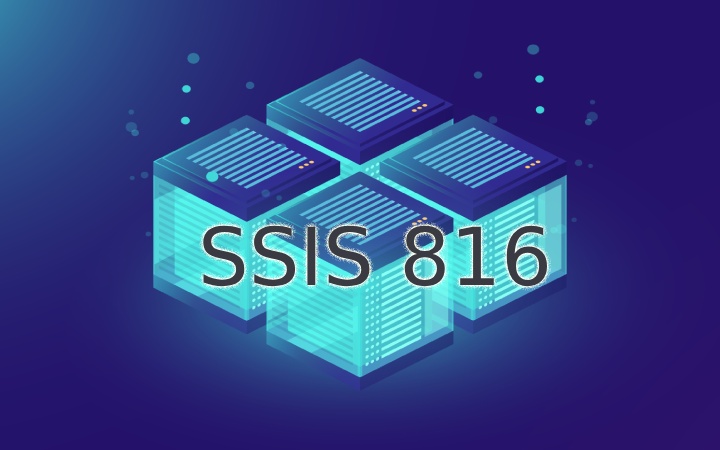Types Of Virtual Reality Glasses: Characteristics And Differences

There are several types of virtual reality glasses; if you want to know what they are, what characteristics and differences they have between them, and what each can be better for, here we explain everything.
What Is Virtual Reality?
Virtual Reality ( VR) is a technology that allows users to immerse themselves in and experience digitally generated environments and situations, often through devices such as virtual reality glasses or headsets. Virtual reality technology creates an immersive simulation that makes users feel truly present in a virtual environment.
For this to be possible, a series of elements are needed, such as virtual reality glasses, which in turn are made up of a display device where you can see the images of the virtual world in a three-dimensional way and stereoscopic view, tracking devices movement, controls and peripherals to interact with the virtual environment, and the virtual reality content that needs to be recreated.
Virtual Reality is used in a variety of fields and is growing more and more as it currently has more and more applications. Some examples are:
- Entertainment: Games and interactive experiences that immerse players in exciting and challenging virtual worlds.
- Education: VR apps that offer educational and interactive simulations for hands-on learning in fields like science, medicine, engineering and more.
- Medicine: Virtual reality environments are used to train medical professionals, treat phobias through virtual world exposure to fear, and assist in therapy and rehabilitation.
- Architecture and Design – Allow architects and designers to create and visualize 3D models of buildings and spaces prior to construction.
- Tourism and travel: VR experiences that allow users to explore tourist places and destinations around the world. For example, being able to see a virtual museum, see what a city and temple were like in ancient times, etc.
- Training and Simulation – Used in industries such as aviation, military, and industrial to train employees in safe and controlled virtual environments.
What Is Augmented Reality?
Augmented Reality ( AR) is a technology that combines elements of the real world with digitally generated elements, overlaying information and virtual objects on the physical environment in real-time. Unlike virtual Reality, which creates a completely simulated environment, augmented Reality adds layers of digital information to the real world that the user can see and experience through devices such as smartphones, tablets, glasses, or augmented reality headsets.
Augmented Reality relies on sensing and tracking the user’s physical environment to properly and accurately place virtual content in the real world. To achieve this, augmented reality technology uses various sensors, such as cameras, motion sensors, GPS, and others, to understand the position and orientation of the user and to interact with the surrounding environment. And, for all this, a viewer device is also needed, which also allows you to see the real world, and that is where the virtual content insertions are made.
What Is Mixed Reality?
Mixed Reality ( MR) is a technology that combines elements of virtual Reality (VR) and augmented Reality (AR) to deliver a more advanced and interactive immersive experience. Mixed Reality focuses on overlaying virtual objects and environments in the real world in a more realistic and coherent way.
Unlike augmented Reality, where virtual objects are overlaid on the physical environment but do not directly interact with it, mixed Reality allows virtual objects to interact with the real world and behave as if they were present in the physical space of the user.
To achieve this, mixed Reality uses advanced environment mapping and sensing technologies, a mix between VR and AR, as well as high-precision sensors and cameras. These devices allow virtual objects to be realistically positioned and moved relative to physical objects and surfaces in the real world. For example, HTC’s virtual reality glasses can offer you this type of augmented Reality.
What Is Extended Reality?
Extended Reality ( XR or extended Reality) is a general term that encompasses all immersive technologies that combine both virtual Reality (VR), Augmented Reality (AR) and mixed Reality (MR) in a continuous spectrum. That is, XR is an umbrella term that covers all experiences that vary from completely virtual environments to environments that mix virtual and physical elements in different proportions.
It is currently still in development, taking advantage of new technologies and devices that are appearing.
Types Of Glasses
Within virtual reality glasses or virtual reality helmets, we can differentiate between several types :
- VR Headsets (Virtual Reality Viewers): are devices designed to provide immersive virtual reality experiences. These devices typically consist of a pair of goggles or helmets that are worn on the user’s head and have screens built into each lens. These displays display 3D virtual reality content, creating the illusion of being present in a virtual environment. VR Headsets are designed to provide a high-quality experience, connecting to a high-performance computer or game console for higher-quality graphics and performance.
- Standalone VR Headsets (Independent Virtual Reality Viewers or All-in-One HMDs): are autonomous virtual reality devices that do not require a connection to a computer or external console to work. These viewers have all the necessary components, including screens, motion sensors, and processors, built into the device itself. Therefore, it is not necessary to connect them to a PC or console to enjoy virtual reality experiences. They are more convenient and portable since they do not have cables that limit the movement of the user.
- Smartphone VR Headsets (Virtual Reality Viewers for Smartphones): these are simpler and cheaper devices that use a smartphone as a screen to provide virtual reality experiences. These viewers, like Google Cardboard or Samsung Gear VR, are basically a helmet or support where the smartphone is inserted. The phone plays virtual reality content through applications and split screens, allowing the user to experience virtual Reality. Although they are more affordable, their quality and performance may depend on the capacity and resolution of the smartphone used.
- Handheld VR (Portable Virtual Reality): refers to virtual reality experiences that can be enjoyed through portable devices, such as controllers or hand controllers. These devices allow the user to interact with the virtual environment, manipulate objects, and perform actions within the virtual world. Hand controllers, also known as motion controllers, are common in more advanced virtual reality systems, such as those used with VR.
Headsets and Standalone VR Headsets provide a more immersive and realistic experience.
How To Choose Good Virtual Reality Glasses
Choosing the right virtual Reality (VR) headsets, or virtual reality glasses, depends on your needs, preferences, and budget, among other things:
Platform And Compatibility: Determine which VR platform you want to use. Some VR headsets require a PC or console to work (VR Headsets), while others are autonomous and do not need an external connection (Standalone VR Headsets). There are also Smartphone VR Headsets that use a smartphone as a screen. Make sure the viewers are compatible with your devices or systems.
Display Quality: Consider the resolution and quality of the viewer’s displays. Higher resolution will provide sharper images and a more immersive VR experience. Also, pay attention to the field of view (FOV) of the scope, as a wider FOV improves the feeling of immersion.
Comfort And Fit: Comfort is crucial for long VR sessions. Look for visors with padding and adjustable straps for a comfortable fit on your head. Also, make sure that the visors are suitable for the size and shape of your head.
Tracking And Controllers – Motion tracking systems and controllers are essential for effective interaction in the virtual world. Ensure your headset offers precise tracking and intuitive controllers to enhance the VR experience.
Experiences And Content: Research the library of apps and games available for the VR platform you’re considering. Make sure content matches your interests and needs for entertainment or work.
Budget: Cost is an important factor to consider. VR Headsets and Standalone VR Headsets are generally more expensive than Smartphone VR Headsets but offer a more immersive experience. Set a budget and look for options that fit within it.
Also Read: What Is AMD EXPO, And What Is It For?






